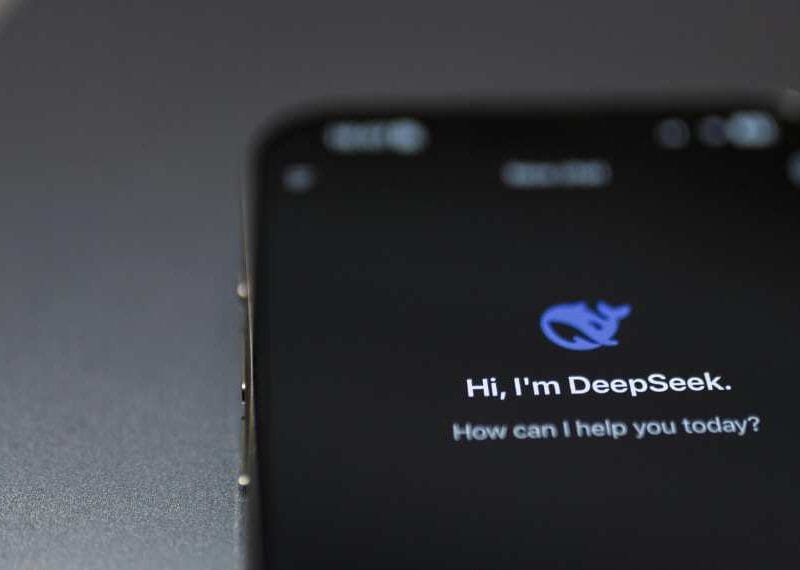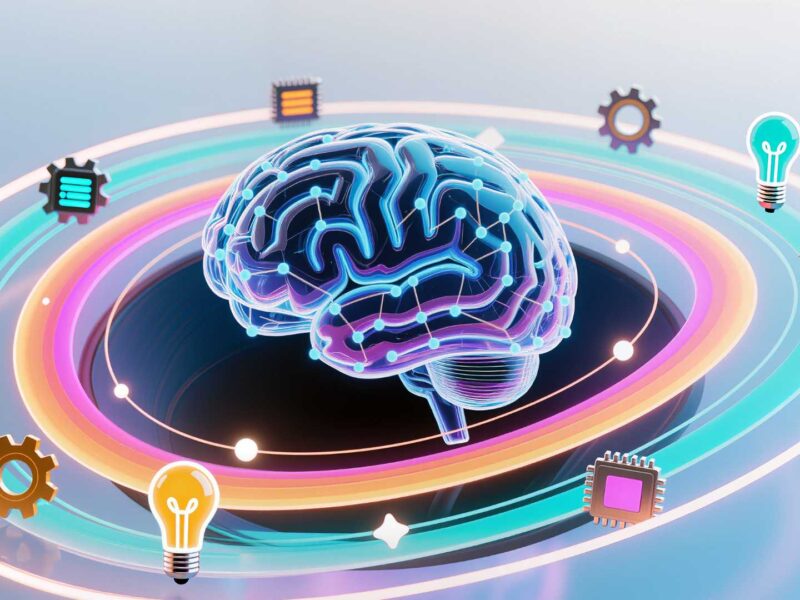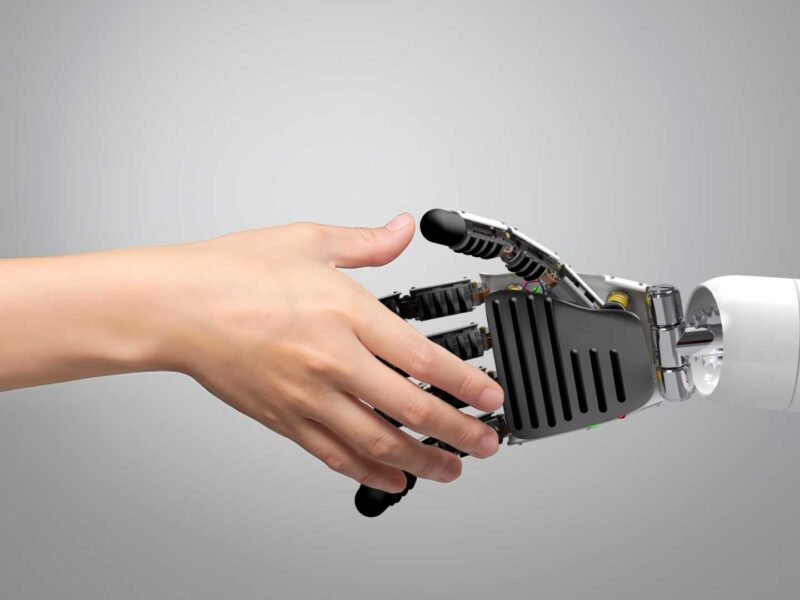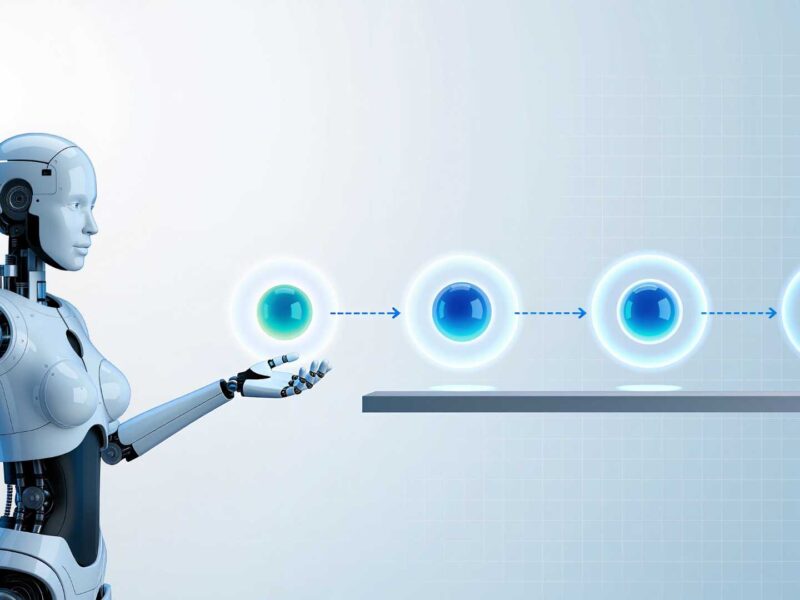Showstopping AI: Practical Breakthroughs Everyone’s Talking About
Artificial Intelligence innovations are consistently making headlines, showcasing dazzling potential that often feels like science fiction.
Yet, amidst the flash and the futurism, a crucial question for business leaders and tech professionals is emerging:
Which AI advancements are not only attention-grabbing but are also delivering tangible, practical value right now, fundamentally reshaping workplaces and industries?
This inquiry moves beyond theoretical discussions to pinpoint real-world applications that truly impress and drive meaningful change.
This article compiles invaluable insights from leading business executives, strategic thought leaders, and seasoned tech professionals, revealing their top picks for AI innovations that blend groundbreaking capabilities with immediate, measurable impact, offering a glimpse into the AI solutions that are actively shaping a more efficient, intelligent, and human-centric future.
Read on!
Microsoft 365 Copilot: From Flashy Demo to Daily Operating System
Generative AI is shifting from buzzword to everyday utility, and Microsoft 365 Copilot is driving that change by weaving large-language-model smarts into the apps people already live in. Early users see major time savings, real revenue gains, and culture-wide productivity boosts that dwarf license costs.
Why It Feels Magical
One chat bar, six apps: A single prompt window covers Word, Excel, PowerPoint, Outlook, Teams, and Loop, so scattered tasks merge into one natural-language flow.
Instant meeting outputs: Real-time summaries and action items mean you leave a call with a ready-made to-do list.
Multimodal reasoning: Raw data morphs into pivot tables, slide decks, or first-draft press releases in seconds.
Proof It Delivers
Over 700 k paying tenants switched on the Zoom-powered AI Companion within ten months, doubling summary volume each quarter and signaling huge appetite for in-suite assistants.
Microsoft telemetry shows 67% of early adopters claw back 2.5–5 hours per week, yielding roughly $3.70 in value per $1 spent on licenses.
Guardrails That Build Trust
Data never leaves the Microsoft Graph or trains the base models.
Copilot automatically follows Purview’s classification, eDiscovery, and DLP rules.
Internal red-team drills, inspired by “Confused Pilot” research, spot risky prompt flows before launch.
Five-Step Roadmap to Value
Run a focused pilot with a cross-functional team; measure hours saved and faster decisions.
Level-up prompts via micro-workshops tailored to each role.
Sprint on data hygiene—archive stale content before turning Copilot on.
Set governance checkpoints; dashboard analytics reveal underused features you can fix with coaching.
Iterate weekly; treat prompts like living macros that evolve with new work.
What’s Next
Microsoft’s roadmap points to agentic workflows that chain actions across Power Automate, Viva, and third-party SaaS, turning Copilot from a chat assistant into a semi-autonomous teammate.
Early adopters stand to multiply their gains as capabilities snowball.

Supratim Sircar
Software Engineer, Cisco
Real-Time AI Personalizes UX Based on User Behavior
One AI advancement that I have been tracking lately is AI-assisted UX personalization driven by real-time behavioral data – specifically tools that allow content layout and call-to-action to adjust based on how users are interacting in the moment.
At PixelChefs, we’ve been working with platforms that are bringing AI into both heatmaps and session tracking, not to just assess behavior, but change elements while the user is on the website. For example, if users hesitates on the pricing area, the AI will automatically surface testimonials of trust badges nearby. If users scroll past an area quickly, it deprioritizes that layout on subsequent visits for other users with a similar journey.
This is essentially A/B testing on steroids on some level – without flips of time in-between A/B scenarios.
This kind of AI doesn’t just impress clients; it delivers measurable ROI. We’ve seen early adopters report up to a 35% increase in time-on-page and a 20% lift in conversion rates, purely from micro-adjustments that reduce friction and align with user intent.
What do I love most? It blends the flash of AI with the function of smarter design. It’s not gimmicky, it’s UX that learns. And in our industry, that’s a game changer.

Alex Alexakis
Founder, Pixel Chefs
AI Chef Creates Original Dishes from Surplus Ingredients
The flashiest practical AI I’ve seen lately is Dubai’s soon-to-open restaurant WOOHOO, where “Chef Aiman,” an AI trained on global flavors and food chemistry, designs menus for human chefs to test and refine.
The “wow” factor is AI coming up with completely original dishes. The practical edge is how it specifically targets kitchen waste by building recipes around surplus or overlooked ingredients. It’s clever because it directly links novelty (AI-designed dishes) with a bottom-line benefit (lower ingredient waste).
More AI should work like this: flashy enough to grab attention, but sensible enough to justify trying tomorrow.

Austin Benton
Marketing Consultant, Gotham Artists
Video Caption Tool Cuts Editing Time by 93%
One of the most practical AI tools that blew my mind recently is Submagic. It’s designed for video editors and content creators, and it automatically generates dynamic captions that appear to have been custom-animated in Premiere Pro. I tested it on a short-form video, and what would usually take me 45 minutes was done in 3. Not just the captions, but the emojis, bolded words, and even sound suggestions felt like someone had read my creative brief. It’s flashy, yes, but the practicality is next level.
I’ve started using it to edit UGC and ad creatives at scale, and my team is now way faster when turning out content for clients. It freed up so much time that we reallocated hours from editing into creative strategy. That’s the kind of AI that impresses me most, not just the flashy demos but tools that help us move faster without losing quality.

Georgi Petrov
CMO, Entrepreneur & Content Creator, AIG MARKETER
AI Agents Transform Business Operations Without New Workflows
I think AI agents represent the kind of practical innovation that actually makes sense for business operations. These systems can autonomously handle complex, multi-step tasks like coordinating vendor communications, managing scheduling conflicts, and processing routine administrative work without constant human oversight.
What I personally find appealing about them is their ability to integrate with existing business tools rather than requiring completely new workflows. I believe the appeal lies in their independence – they can maintain context across extended conversations, learn from interactions, and adapt their responses based on previous outcomes. The technology seems particularly suited for handling the repetitive coordination tasks that often consume significant time in professional environments.
While I’m still cautious about their limitations, I would say they offer a more realistic approach to AI implementation than some of the more ambitious promises we hear about.

Michelle Garrison
Event Tech & AI Strategist, We & Goliath
Google Edge Gallery Runs AI Models Offline
One cool and useful AI innovation that’s really got me excited is Google’s AI Edge Gallery—an experimental Android app that lets you download and run AI models entirely offline, on your phone, without the cloud (linkedin.com).
On paper this sounds like science fiction. In reality it’s a game changer. Imagine doing image analysis, text generation or code completion right on your device—no internet required. It’s private, fast and works anywhere, whether you have a signal or not.
For everyday users it means AI powered capabilities in places where connectivity is spotty—like remote areas, planes or secure environments with no Wi-Fi. For professionals it means rapid prototyping, testing or debugging without latency or cloud dependency.
What I love most is this: by running models locally, Google is shifting some of the burden from centralised servers to edge devices. That opens up new classes of apps—apps that honour privacy, reduce costs and empower users even without data access.
It’s a subtle but powerful move towards democratizing AI, giving creators and developers tools that feel trustworthy and personal.
And it’s a sign of a broader shift away from server centric models. This will inspire other platforms to follow suit and unlock innovation in areas like offline first education tools, field research, mobile health diagnostics or even on device creative tools. In short Google’s Edge Gallery isn’t just cool—it’s a blueprint for the next frontier of AI.

Sovic Chakrabarti
Director, Icy Tales
RAG Technology Grounds AI in Brand Knowledge
There’s a lot of noise in the AI space right now, but one innovation that has caught my attention recently is retrieval-augmented generation (RAG) being incorporated into content workflows. It’s both impressive and incredibly useful.
RAG allows AI systems to pull from real-time or custom data sources, such as your internal content library, analytics, or support documents, before generating responses. This means the output isn’t just based on generic language modeling; it is grounded in the actual knowledge and assets that your business already owns. For marketers, RAG bridges the gap between AI creativity and brand consistency.
At PressRoom, we’ve begun testing RAG pipelines to assist with content repurposing. For example, we input existing blog posts, brand guidelines, and campaign performance data, and the system suggests new content angles tailored to our voice and what has historically worked. This approach is saving our team hours without compromising our strategic edge.
Why I’m excited about it: RAG represents a practical leap forward. AI that doesn’t just generate more content, but generates smarter content using the context that matters to you.

Amber Wang
Co- Founder & Data Scientist, PressRoom AI
AI Simplifies Insurance Claims, Eliminates Paperwork Nightmares
I’m constantly watching the AI space through the lens of practical utility: what’s not just cool, but makes people’s lives meaningfully easier?
One thing that blew me away recently: AI agents auto-filling insurance reimbursement forms for out-of-network therapy.
Sounds boring at first glance — like, “okay cool, some paperwork automation.” But it’s quietly revolutionary. If you’ve ever tried to file one of those claims, you know it’s a bureaucratic nightmare: dozens of confusing fields, vague CPT codes, pages of jargon that seem intentionally designed to trip you up. Most people just give up and eat the cost. Or worse, they skip therapy altogether.
Now, there are AI-powered platforms (like Mentaya) that simply ask you to upload your superbill, then fill out and submit the reimbursement form for you. No hunting down your plan ID, no decoding what box 24d means, no customer support phone marathons. In 30 seconds, you’re done. It feels like skipping six weeks of mental clutter.
It’s flashy in the sense that it sounds like magic — and it kind of is — but it’s wildly practical because it removes real friction from something that affects people’s health and wallets. And it’s a good reminder that not all innovation needs to look like autonomous humanoid robots. Sometimes it looks like never having to touch a fax machine again.

Derek Pankaew
CEO & Founder, Listening
Predictive AI Transforms Airport Pickups into VIP Experience
Once, an AI tool predicted a 40-minute delay at Mexico City Airport—and my client thought I had connections inside Immigration.
That moment shifted my operation of Mexico-City-Private-Driver.com. I had just embedded an AI-based traffic and flight delay tracking tool into our back-end. It was feeding data from Waze, airport APIs, and social dialogue from airport terminals. One day, I got an alert about incoming congestion and an unexpected backlog at T2. I moved up our VIP pickup time by 45-minutes to be proactive.
When she walked out of arrivals—right on time, before the drama—I was already flagged, smiling. She said to me: “How did you know?”
That one experience created a domino of customer trust. Since introducing this AI-enhanced predictive routing, our airport pickups are now running, on average, 92% fewer delays with a 18-minute wait improvement. But, beyond then we are delivering peace of mind to our clients—especially those new to Mexico—which has helped turn our service offering from luxury into loyalty.
In my eyes, cool technology doesn’t bring a futuristic robot. It brings a predictive empathy—using intelligent systems to predict human friction points and fancifully remove them before clients realize this has happened.
That is innovation that takes a driver into a concierge and takes a trip into a life experience.
On behalf of the Techronicler community of readers, we thank these leaders and experts for taking the time to share valuable insights that stem from years of experience and in-depth expertise in their respective niches.
If you wish to showcase your experience and expertise, participate in industry-leading discussions, and add visibility and impact to your personal brand and business, get in touch with the Techronicler team to feature in our fast-growing publication.












